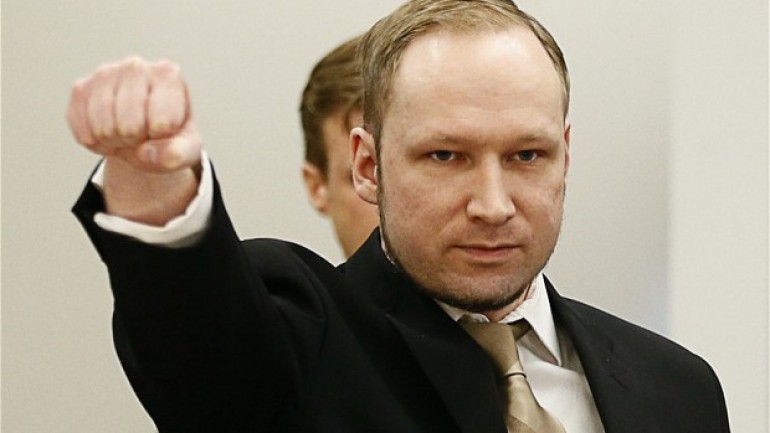Anders Behring Breivik is the main suspect in the July 22, 2011 attacks in Norway. Breivik is a Norwegian citizen who has admitted to perpetrating Norway’s biggest massacre since World War II. He is responsible for killing 77 people and injuring hundreds in Oslo, Norway’s capital.
Breivik was born on Feburary 13, 1979, to Jen Breivik, an economist at the Norwegian embassy in London, and Wenche Behring, a nurse. Breivik’s parents split when he was a year old, and Behring moved back to Norway, taking her young son with her. Breivik has two half-brothers and one half-sister from his father, and one half-sister from his mother. He grew up with his mother on Oslo’s affluent West End, and visited his father, who had been transferred to Paris, in the summers. When he was 15, he had a falling out with his father, and the two have cut off contact since.
Breivik attended Hartvig Nissen High School and Oslo Commerce School, and took online course in small business management.
Police believe Breivik planned his actions years in advance. He visited Prague in the fall of 2009, hoping to buy weapons in the Czech capital, which has some of the least stringent gun control laws in Europe. Breivik was unable to stock up weapons like he had planned, but continued to plot hit attacks when he returned to Norway.
In June or July 2011, Breivik moved to the small rural town of Rena about 86 miles northeast of Oslo. He started a farming business under the name Breivik Geofarm. In May 2011, Breivik Geofarm purchased six tons of fertilizer. It was later discovered that the bomb that exploded in the July 2011 Oslo attacks was made of a mix of fuel and fertilizer, reminiscent of the Oklahoma City bombing.
Attack on Oslo
On July 22, 2011, a bomb exploded in a car outside the office of Prime Minister Jens Stoltenberg in Regjeringskvartalet in central Oslo. The powerful blast killed eight people and injured hundreds. The explosion in the small, and usually peaceful, nation came as a shock to people around the world.
As news of the blast spread, Anders Behring Breivik boarded a ferry to the island of Utoya, 25 miles northwest of Oslo. Breivik was armed, and dressed in a police uniform. Utoya was the location of a political youth summer cap organized by the Norwegian Labor Party. Breivik went on a deadly shooting spree at the camp, killing 69 people, mostly teens.
Police arrested Breivik when they reached Utoya an hour and a half after he commenced his murderous rampage. Breivik admitted to the killings while he was being held in police custody.
Hours before the attacks, Breivik e-mailed a 1,500-page manifesto to 5,700 people, titled 2083 – A European Declaration of Independence. In the document Breivik attacks multiculturalism and the “threat” of Muslim immigration to Norway, as well as Marxism and the Norwegian Labor Party. Breivik copied large sections of the Unabomber manifesto. Breivik writes that he is a “savior of Christianity,” and claims to be part of an order called the “Knight’s Templar.” Breivik was active on anti-Muslim websites.
Breivik was arrested and taken into custody, as police searched for survivors in the aftermath of the attacks. Though he admitted to the attacks, he pleaded not guilty in a closed-door hearing on July 25. Breivik has said that he belongs to an organization with terror cells that remain at large.
On August 24, 2012, a Norwegian court sentenced Breivik to 21 years in prison, the maximum sentence allowed in Norway. Although he can be released after his sentence of 21 years under Norwegian law, he will likely have his sentence extended for the rest of his life due to the severity of his crimes and the his statement that he would have liked to kill more people during his trial. Under Norwegian law, if a person is considered a threat to the public then they will not be released back into society.




Sadly, Breivik does have a point.
Norwegian Rambo